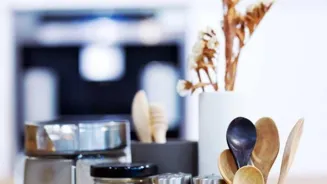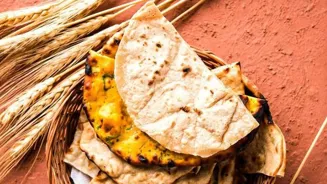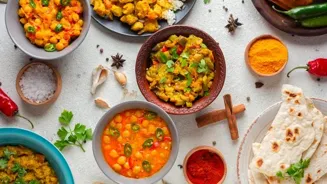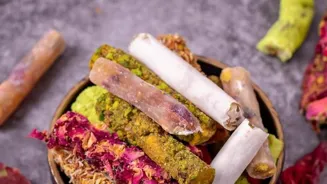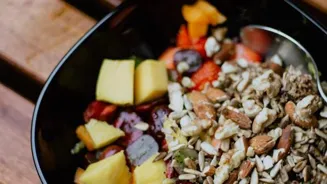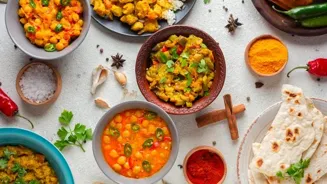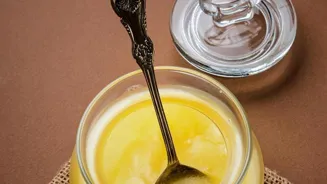Unveiling the Chemistry Behind Cooking: Elevate Your Culinary Skills with Science! Delve into the art of flavors and textures
In India, cooking isn't just a chore; it's an art form, a tradition passed down
through generations. But behind every perfectly spiced curry and fluffy idli lies a fascinating world of chemistry.
Understanding the scientific principles at play can elevate your cooking from simple following recipes to creating culinary masterpieces. This article explores how a little bit of science can significantly enhance your skills in the kitchen, making you a more confident and creative cook.
Forget blindly following instructions; let's delve into the 'why' behind the 'how'.
Browning food adds flavor through Maillard reaction, watch temperature
The browning of food, often called the Maillard reaction, is a prime example of chemistry in action. This reaction occurs when amino acids (from proteins) and reducing sugars are heated. Think of the golden crust on a perfectly baked bread or the delicious sear on paneer tikka.
This isn't just about aesthetics; the Maillard reaction creates hundreds of different flavor compounds, adding depth and complexity to your dishes. Controlling the temperature and moisture levels is key to achieving the desired level of browning and flavor development.
Too much heat can lead to burning, while too little might result in a pale and bland dish. Remember that temperature and time are critical, be observant when cooking!
Chemistry of taste: understanding flavors to create balanced dishes
The way we taste food is another area where chemistry plays a vital role. Our taste buds can detect five basic tastes: sweet, sour, salty, bitter, and umami. Flavour, however, is a complex combination of taste, smell, and even texture.
Understanding how different ingredients interact to create these flavors is essential for creating well-balanced dishes. For instance, adding a touch of acidity (like lemon juice or vinegar) can brighten up a rich dish and balance out the sweetness.
Similarly, a pinch of salt can enhance the sweetness of a dessert. Playing with these flavor profiles allows you to customize recipes to your personal preferences and create exciting new combinations that excite your palate.
With the knowledge and practice of flavour profiling and how ingredients react you can improvise and find better ways to come up with flavour for a dish.
Gluten in flour crucial for baking light vs. dense goods
Gluten, a protein found in wheat flour, is what gives bread its structure and elasticity. When flour is mixed with water, gluten strands form, creating a network that traps air bubbles and allows dough to rise.
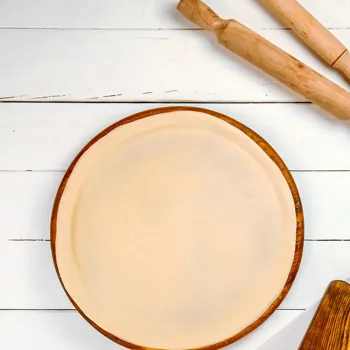
Understanding gluten development is crucial for baking light and airy breads, fluffy rotis, and perfect cakes. Over-mixing dough can lead to tough and chewy baked goods, while under-mixing can result in a dense and flat product. Different types of flour contain varying amounts of gluten.
For example, bread flour has a high gluten content and is ideal for making chewy breads, while cake flour has a low gluten content and is better suited for tender cakes. Understanding what kind of flour will make it easier for you to make your dishes much better.
Acids and bases in cooking affect texture and flavor
Acids and bases play a significant role in many cooking processes. For example, marinating paneer in yogurt (which contains lactic acid) tenderizes the protein, making it more flavorful and easier to digest. Similarly, baking soda (a base) is often used in baking to leaven cakes and cookies.
When baking soda reacts with an acidic ingredient like buttermilk or lemon juice, it releases carbon dioxide gas, which creates air bubbles and makes the batter rise.
Understanding the pH levels of different ingredients and how they interact can help you control the texture and flavor of your dishes. Baking, requires a high level of monitoring and understanding of how acids and bases work.
Emulsification combines liquids for stable mixtures in cooking
Emulsification is the process of combining two liquids that don't normally mix, such as oil and water. Mayonnaise, salad dressings, and sauces like hollandaise are all examples of emulsions.
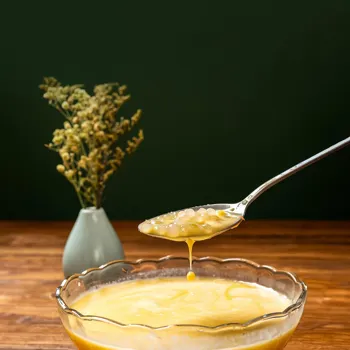
To create a stable emulsion, you need an emulsifier, a substance that helps to keep the two liquids mixed together. Egg yolks are a common emulsifier in many recipes. Emulsifiers work by reducing the surface tension between the two liquids, allowing them to form a stable mixture.
Understanding the principles of emulsification can help you create smooth and creamy sauces and dressings that won't separate. Emulsification is common is many dressing and is an easy trick to bring your sauce come together instead of having separated oil and water.
Understanding cooking chemistry enhances culinary skills
Cooking is a constant dance between heat, ingredients, and time. By understanding the chemical reactions that occur during cooking, you can gain greater control over your dishes and create consistent, delicious results. So, next time you're in the kitchen, don't just follow the recipe blindly.
Think about the science behind each step and experiment with different techniques to discover your own culinary style. A basic grasp of chemistry and other associated sciences can vastly improve your cooking abilities by teaching you not to prepare meals haphazardly.
It gives us a greater insight of what occurs to our food as we cook.
AI Generated Content. Glance/InMobi shall have no liability for the content